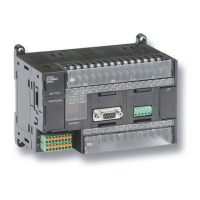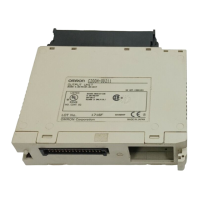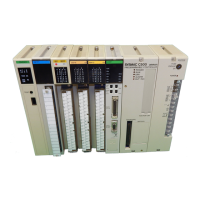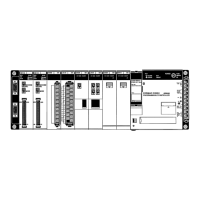100
Instruction Functions Section 2-2
2-2-28 Failure Diagnosis Instructions
Instruction
Mnemonic
Code
Symbol/Operand Function Location
Execution
condition
Page
FAILURE ALARM
FAL
@FAL
006
Output
Required
1140
SEVERE
FAILURE ALARM
FALS
007
Output
Required
1148
FAILURE POINT
DETECTION
FPD
269
Output
Required
1156
FAL(006)
N
S
N: FAL number
S: 1st message
word or error
code to gener-
ate
ERR Indicator flashes
Generates or clears user-defined non-fatal errors. Non-fatal errors
do not stop PC operation.
Also generates non-fatal errors with the system.
Execution of
FAL(006)
generates a
non-fatal error
with FAL
number N.
FAL Error Flag ON
Corresponding Executed FAL
Number Flag ON
Error code written to A400
Error code and time written to Error
Log Area
Message
displayed on
Programming
Console
FALS(007)
N
S
N:
S:
1st message
word or error
code to gener-
ate
FALS number
ERR Indicator lit
Generates user-defined fatal errors. Fatal errors stop PC operation.
Also generates fatal errors with the system.
Execution of
FALS(007)
generates a
fatal error
with FALS
number N.
FALS Error Flag ON
Error code written to A400
Error code and time/date written to
Error Log Area
Message displayed
on Programming
Console
FPD(269)
C
T
R
C: Control word
T: Monitoring time
R: 1st register
word
T
R
Diagnostic output B
Next instruction block
Logic diagnosis function
Determines which input in C
prevents output B from going ON.
Logic diagnosis
execution condition C
Logic diagnosis block*
Execution
condition A
Error-pro-
cessing
block (op-
tional)
Time monitoring function:
Starts timing when execution condition A goes
ON. Generates a non-fatal error if output B
isn't turned ON within the monitoring time.
Diagnoses a failure in an instruction block by monitoring the time
between execution of FPD(269) and execution of a diagnostic output
and finding which input is preventing an output from being turned ON.

